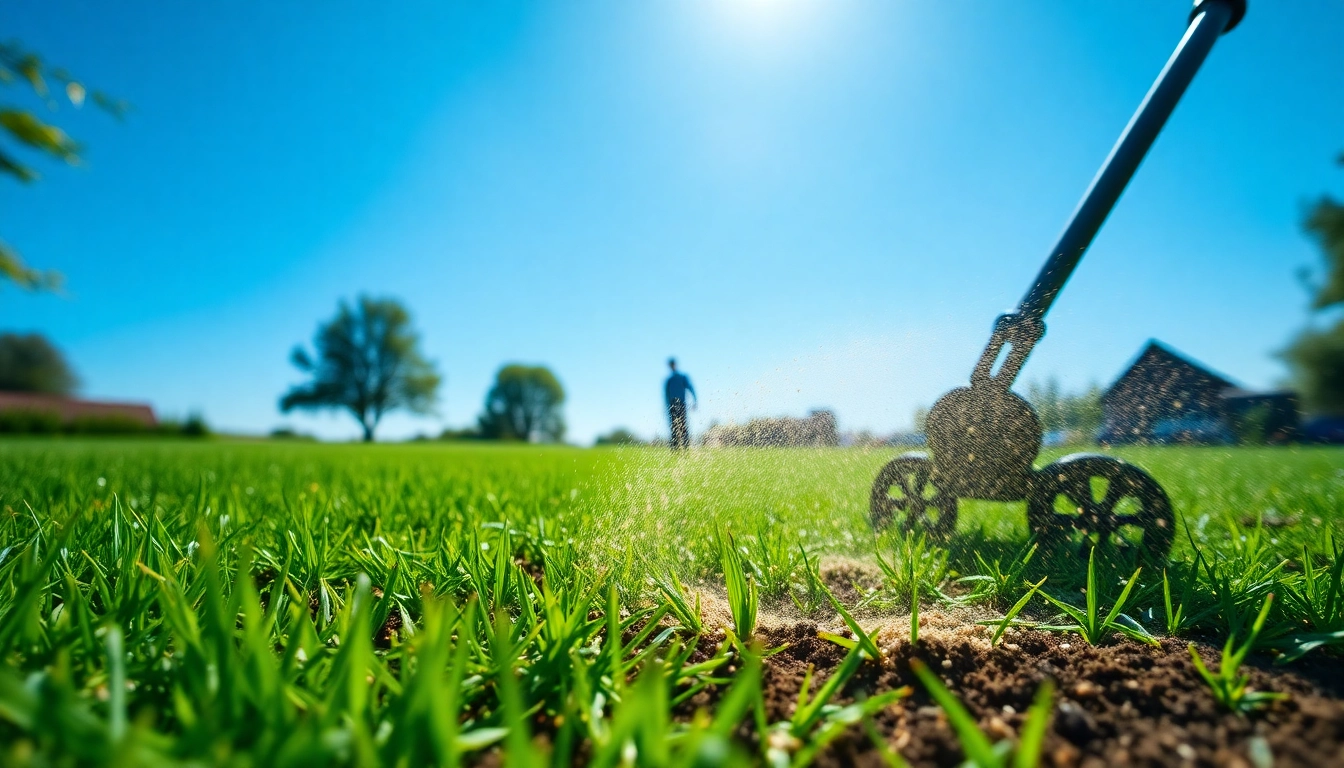Understanding Over Seeding
What is Over Seeding?
Over seeding is the process of adding new grass seed to an existing lawn without disturbing the soil or existing turf. This method enriches the grass by filling in bare spots, thickening the lawn, and introducing new grass varieties that may be more disease-resistant or drought-tolerant. For those looking to rejuvenate their lawn, over seeding provides an effective solution that promotes a healthier and more vibrant landscape.
Benefits of Over Seeding for Lawn Health
Over seeding offers numerous benefits for your lawn’s health and appearance, including:
- Thicker Grass: By introducing new seeds, over seeding encourages denser grass growth, which can better compete against weeds.
- Improved Disease Resistance: Mixing different grass varieties can enhance resistance to diseases and pests.
- Better Drought Tolerance: Certain grass types are more drought-tolerant, helping maintain a lush lawn during dry spells.
- Enhanced Aesthetics: A thicker, fuller lawn looks more attractive and healthy, boosting your home’s curb appeal.
- Soil Improvement: As new grass matures, it helps to stabilize the soil, improving its overall health and fertility.
Common Myths about Over Seeding
Despite its effectiveness, several myths surround the practice of over seeding:
- Myth 1: Over seeding is only for damaged lawns. While it can help repair damaged areas, it’s beneficial for all lawns, especially those looking to improve thickness and health.
- Myth 2: Too much seed will produce better results. Over-seeding with excessive amounts can lead to overcrowding and competition for resources.
- Myth 3: Only new lawns should be over seeded. Existing lawns, regardless of their age, can benefit from the process.
When to Over Seed Your Lawn
Optimal Seasons for Over Seeding
Timing is critical when planning to over seed your lawn. The optimal seasons are:
- Late Summer to Early Fall: This period is ideal as the soil is warm, and rainfall tends to be more plentiful, providing an excellent environment for seed germination.
- Spring: Early spring can also work, provided the grass has emerged and the soil temperature is above 55°F. However, competition from weeds may be higher during this time.
Weather Conditions to Consider
Before over seeding, consider the following weather conditions:
- Temperature: Ideal soil temperatures for seed germination range from 60°F to 75°F.
- Moisture: Adequate moisture is essential. Ensure that your lawn can receive consistent watering, especially if it doesn’t rain regularly.
- Wind: High winds can blow away seeds or cause them to unevenly distribute. Try to choose a calm day to over seed.
Signs Your Lawn Needs Over Seeding
Identifying the right moment to over seed is vital for success. Look for these signs:
- Visible patchiness or bare spots in your lawn.
- Thin overall grass coverage, making the soil more visible.
- The presence of more weeds compared to grass.
- Poor growth or health status of the current grass.
Preparing Your Lawn for Over Seeding
Essential Lawn Care Before Over Seeding
Preparation is key to a successful over seeding project. Here are essential steps to consider:
- Assess the Soil: Conduct a soil test to determine pH levels and nutrient content, helping you decide on any needed amendments.
- Mow Your Lawn: Cut the grass shorter than usual—around 1.5 inches high—to allow seed better contact with the soil.
- Crowd Control: Remove any debris, such as sticks, leaves, or grass clippings that might suffocate seeds.
Choosing the Right Grass Seed
Selecting the proper grass seed is crucial for over seeding success. Consider these factors:
- Grass Type: Select a seed type that matches your existing grass for better compatibility.
- Drought Resistance: Choose drought-resistant varieties if you live in dry regions.
- Sun vs. Shade Tolerance: Consider the sun exposure of your lawn—some grasses thrive better in shaded areas while others prefer full sun.
Tools and Equipment Needed for Success
Here are the essential tools for effective over seeding:
- Seed Spreader: A broadcast or drop seeder evenly distributes the grass seed over the lawn.
- Lawn Rake: Use a rake to loosen the topsoil and help the seed make contact with the soil.
- Watering Equipment: A sprinkler system or hose for consistent watering post-seeding is essential.
Step-by-Step Guide to Over Seeding
How to Prepare Your Lawn Soil
The preparation of your lawn’s soil involves several important steps:
- Raking: Rake the lawn to remove debris and loosen the soil, ensuring a better seed-to-soil contact.
- Topdressing: Apply a thin layer of compost or topsoil to the lawn before spreading the seeds; this enriches the soil for new growth.
Proper Techniques for Spreading Seed
To achieve even distribution, follow these techniques:
- Cross-Pattern Distribution: Use a seed spreader to apply the seed in two directions (north-south and east-west) to avoid overlapping and ensure uniform coverage.
- Seed Depth: Aim for a light layer of seed; most grass seeds should be planted no deeper than 1/8 inch.
Post-Seeding Care and Maintenance
After over seeding, your lawn will need special care:
- Watering: Keep the soil moist by watering lightly and frequently, especially during the initial germination period.
- Fertilization: Consider applying a starter fertilizer to encourage growth; look for a fertilizer high in phosphorus for strong root development.
- Avoid Foot Traffic: Limit foot traffic on the lawn to prevent disturbing the new seeds until they are established.
Evaluating the Results of Your Over Seeding Efforts
Monitoring Grass Growth After Over Seeding
After a few weeks, assess the progress of your over seeding efforts:
- Seed Germination: Ensure the seeds are sprouting and check for uneven growth.
- Weed Appearance: Monitor for weed growth; if they appear, manage them through proper lawn care practices.
Adjusting Care Based on Lawn Performance
Be prepared to adjust your lawn care routine based on its performance:
- Watering Schedule: Modify your watering schedule according to environmental conditions and grass growth.
- Additional Feeding: You may need to apply more nutrients if the new grass appears weak or slow-growing.
Long-term Strategies for Lawn Maintenance
To achieve lasting results from your over seeding efforts, implement these strategies:
- Regular Mowing: Maintain consistent mowing heights to encourage strong grass development and discourage weeds.
- Seasonal Treatments: Consider seasonal treatments and fertilization to keep your lawn healthy year-round.
- Ongoing Observation: Regularly evaluate your lawn’s health and make adjustments as needed, particularly watching for pests and diseases.



